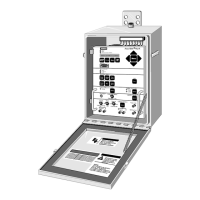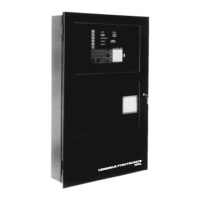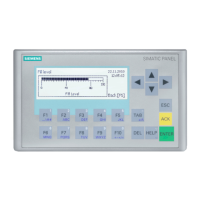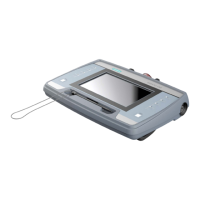4 Setting Up the MJ-5 Control Panel
Siemens Industry, Inc. 20
The <CONFIGURE> Menu
4.3.1 TapChngr (Tap Changer Type)
The TapChngr data item defines the tap changer
mechanism type. Tap changer mechanisms vary among
regulating device suppliers. This data item allows the MJ-5
to be configured specifically for the connected tap changer
device.
4.3.2 Type (Regulator Type)
The Type data item defines the step-voltage regulator type.
The designations “straight” (ANSI Type: A) and “inverted”
(ANSI Type: B) are frequently used to denote the
difference. See Figures 4.1 to 4.4 for examples.
Since November, 1995, the regulator type is identified by
either an ANSI Type A or B designation. Older nameplates
did not include this information and the type must be
determined from the schematic diagram on the regulator
nameplate.
“STRAIGHT” design characteristics: (See Figure 4.2 and
4.3).
• The source (‘S’) bushing is connected to the tap changer
reversing switch and to one end of the main winding.
• The load (‘L’) bushing is connected via the preventive
autotransformer to the moving contacts of the tap
changer.
• The utility (tertiary) winding leads are labeled U3, U4,
U5, ...
“INVERTED” design characteristics: (See Figures 4.1 and
4.4)
• The source (‘S’) bushing is connected via the preventive
autotransformer to the moving contacts of the tap
changer.
• The load (‘L’) bushing is connected to the tap changer
reversing switch and to one end of the main winding.
• Utility (tertiary) winding leads are labeled P3, P4, P5, ...
4.3.3 System (Regulator Installation)
The System data item defines whether the regulator is Delta
or Wye-connected. See Appendix D, section D.1 for
guidance in determining which regulator is leading and
which is lagging (for Delta-configured regulators).
4.3.4 DeltaPwr (Delta Power)
The Delta Pwr item defines the wiring arrangement for
Delta-connected systems. Specify either Open or closed.
The setting does not matter for a Wye-connected system.
4.3.5 Utility Pol (Utility Polarity)
The Utility Pol data item allows you to correct for polarity
differences between the CT winding and the Utility
(Tertiary) winding.
To define the Utility Polarity, view Utility Pol; then,
1. If you have a single-phase Inverted-type regulator,
specify Utility Pol: Norm.
2. If you have a single-phase Straight-type regulator, see
Appendix D, section D.3.
4.3.6 Vprimary Max
The Vprimary Max setting defines the maximum voltage
on the primary side of the U2 PT and P2 PT ratios. Set
650k for LTC transformers; use the default of 65k for
voltage regulators.
4.3.7 U2 PT (Utility (tertiary) Winding)
The U2 Potential Transformer ratios are used by the control
program to scale the voltages supplied by the regulator to
the basis voltage (nominal 115, 120, or 125 V).
Many regulators are built with transformer turns ratios that
do not provide the exact basis voltage (115, 120, or 125 V)
to the controller. Previous generation controllers include a
tapped sensing transformer to correct the voltage. Instead of
using a sensing transformer, the MJ-5 corrects the voltage
mathematically, using the U2 PT turns ratio. Determine the
turn ratio for the regulator from the regulator’s nameplate.
The U2 PT data item defines the turn ratio of the winding
that appears at the U2 terminal on the Polarized Disconnect
Switch (PDS).
To define the turn ratio, you must first determine which
column in the nameplate describes the “U2” secondary for
a given primary voltage. The U2 pin is attached to the
regulator Utility Winding. The U2 lead provides the power
to the controller, and is always present. It is often labeled
Motor Conn. or Control & Motor on the nameplate. See
Figure 4.1 to 4.4 for examples.
View U2 PT. Then, specify the turn ratio exactly as it is
specified on the regulator nameplate (e.g., 7620:121). The
microprocessor will correct the reference voltage to the
basis voltage (115, 120, or 125 V).
4.3.8 P2 PT (Potential Transformer)
The P2 PT data item defines the turn ratio of the Potential
Transformer appearing at the P2 terminal on the Polarized
Disconnect Switch (PDS).
Note: For regulators with no potential transformer,
set the P2 ratio to the same value as the U2 ratio.

